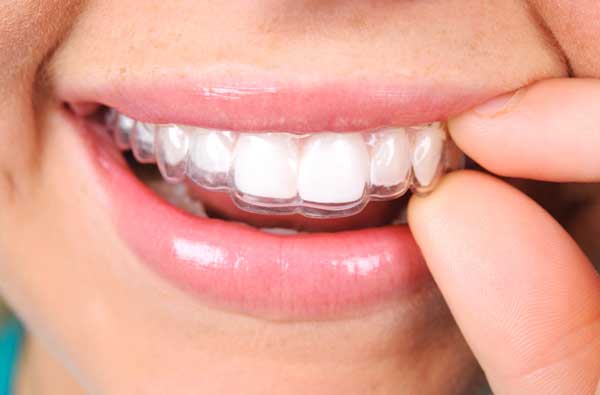



Minimal Intervention:
Conserve healthy tooth structure and prioritize minimally invasive procedures.
Biomimetic Materials:
Utilize materials resembling the properties of enamel, dentin, and other natural tissues.
Adhesion & Bonding:
Achieve strong, long-lasting bonds between restorations and tooth structures.
Biomechanics:
Restore the tooth's natural biomechanical function for optimal biting and chewing.
Preservation:
Promote pulp vitality and avoid unnecessary root canals when possible.


Stronger, more durable restorations:
Improved resistance to fractures and chipping.
Less sensitivity:
Minimized discomfort after treatment.
Longer lifespan:
Potential for restorations to last longer than traditional methods.
More natural appearance:
Restorations closely resemble natural teeth for improved aesthetics.
Better oral health:
Promotes overall oral health by preserving tooth structure and minimizing invasive procedures.



BIOMIMETIC RESTORATIONS
TRADITIONAL CROWNS
CONSERVATIVE - Less tooth structure removed because porcelain can be bonded to tooth structure.
MORE INVASIVE - More tooth structure prepared in order to get enough retention from the tooth for the crown to stay on.
STRONGER - Well-bonded porcelain crowns are up to 8x stronger than the traditional porcelain fused to metal crowns.
WEAKER - Porcelain fused to metal (PFM) crowns have a weak interface between the porcelain and metal, which is the most commonly fractured area on these crowns.
LONGER LASTING
- When porcelain Emax crowns are bonded to your tooth, it creates an absolute seal from bacteria in the mouth.
- X-rays can pass through porcelain crowns, allowing for earlier detection of problems.
CAN FAIL SOONER
-Traditional crowns are placed on the tooth with "luting cement", which merely fills the gap between the tooth and crown - NOT SEALED MICROSCOPICALLY
- X-rays cannot pass through the material in traditional crowns, which can allow bacteria to fester undetected
Biomimetic vs. Traditional Methods


What Makes us
UNIQUE -




Minimal Intervention:
Conserve healthy tooth structure and prioritize minimally invasive procedures.
Biomimetic Materials:
Utilize materials resembling the properties of enamel, dentin, and other natural tissues.
Adhesion & Bonding:
Achieve strong, long-lasting bonds between restorations and tooth structures.
Biomechanics:
Restore the tooth's natural biomechanical function for optimal biting and chewing.
Preservation:
Promote pulp vitality and avoid unnecessary root canals when possible.


Stronger, more durable restorations:
Improved resistance to fractures and chipping.
Less sensitivity:
Minimized discomfort after treatment.
Longer lifespan:
Potential for restorations to last longer than traditional methods.
More natural appearance:
Restorations closely resemble natural teeth for improved aesthetics.
Better oral health:
Promotes overall oral health by preserving tooth structure and minimizing invasive procedures.



BIOMIMETIC RESTORATIONS
TRADITIONAL CROWNS
CONSERVATIVE - Less tooth structure removed because porcelain can be bonded to tooth structure.
MORE INVASIVE - More tooth structure prepared in order to get enough retention from the tooth for the crown to stay on.
STRONGER - Well-bonded porcelain crowns are up to 8x stronger than the traditional porcelain fused to metal crowns.
WEAKER - Porcelain fused to metal (PFM) crowns have a weak interface between the porcelain and metal, which is the most commonly fractured area on these crowns.
LONGER LASTING
- When porcelain Emax crowns are bonded to your tooth, it creates an absolute seal from bacteria in the mouth.
- X-rays can pass through porcelain crowns, allowing for earlier detection of problems.
CAN FAIL SOONER
-Traditional crowns are placed on the tooth with "luting cement", which merely fills the gap between the tooth and crown - NOT SEALED MICROSCOPICALLY
- X-rays cannot pass through the material in traditional crowns, which can allow bacteria to fester undetected
Biomimetic vs. Traditional Methods





